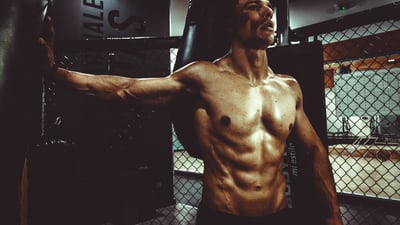
Click Here for Free Bodybuilding and Fitness Magazine Subscription
Neglected Muscles

These Muscles Are The Most Neglected By Weightlifters
There are over 600 muscles in the human body, but even the
most passionate weightlifters only focus on certain muscle groups to build
muscle and burn fat when training. Often, weightlifters, athletes, and
exercise enthusiasts only train their abdominals, biceps, triceps, glutes, and
quads as these areas show the most visible results of their hard work. But
while it may seem like a good strategy to spend more time on these muscles, it
can lead to neglect of other important muscle groups which can result in pain and injury. Training all your
muscle groups evenly can improve physical performance and reduce your risks of
sustaining an injury, so for a symmetrical body and enhanced strength, train
these often neglected muscles when you're in the gym.
Trapezius muscles
Most weightlifters do push-ups, bench presses, and overhead
dips when doing upper body workouts since these exercises develop the A-list
muscles, such as the biceps and triceps. However, it's important not to neglect
the muscles on your back, specifically the trapezius muscles, since a strong
back allows you to lift weights easily and have a wider
range of movement while working out or doing everyday tasks. To build a bigger
and stronger back, start by holding dumbbells in each hand and place them at
your sides. Next, take even steps, making sure to keep your core and back
engaged. You can also use a resistance band to do face pulls by setting your
resistance band at about eye-level. Keep your elbows high as you pull the band
towards your face. Also, don't forget to do neck strengthening exercises such
as neck tilts and chin tucks to maintain posture and prevent pain while
working out your traps. Do these exercises before training your trapezius
muscles to make breathing easier and relieve neck pain issues.
Rotator cuff
Neglecting to properly train your rotator cuff, which is the
group of muscles that stabilize your shoulder joints and helps you lift and
rotate your arm, can result in pain and restricted range of motion. Most
weightlifters only focus on the rotator cuff after they've injured this area,
so it's important to strengthen it so you won't tear or damage these muscles.
To train your rotator cuff, wrap a mini resistance band around your wrists,
then bend your elbows and make sure that your forearms are in a straight line.
Keep elbows at your sides as you move your palms away from each other, then
bring them back to your original position. Apart from this simple workout, your
can also strengthen your rotator cuff by doing 12 to 15 reps of plank
taps.
Calf muscles
If you've ever seen guys with bulging quads but skinny lower
legs, it's clear that they're skipping their calf exercises. Training your
calves not only gives you a more balanced or symmetrical body, but having
strong lower legs also allows you to do dynamic movements when you're
powerlifting. To strengthen your calves, do standing calf raises while on an
elevated surface, such as the stairs, or do seated calf raises while holding
weights on top of your thighs.
Working out these often-neglected muscles can result in a
better weightlifting performance and a stronger body. Make sure to pay
attention to these areas to reduce your risks of injury and gain an even
physique.

